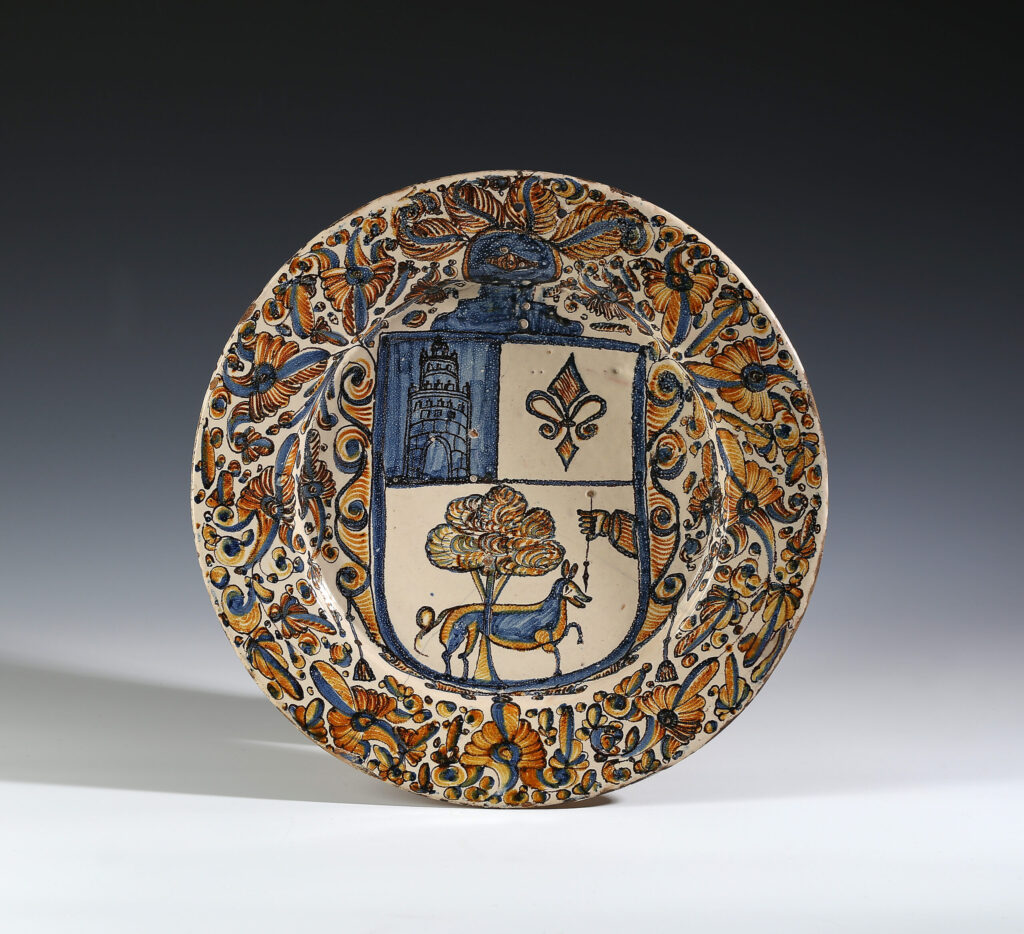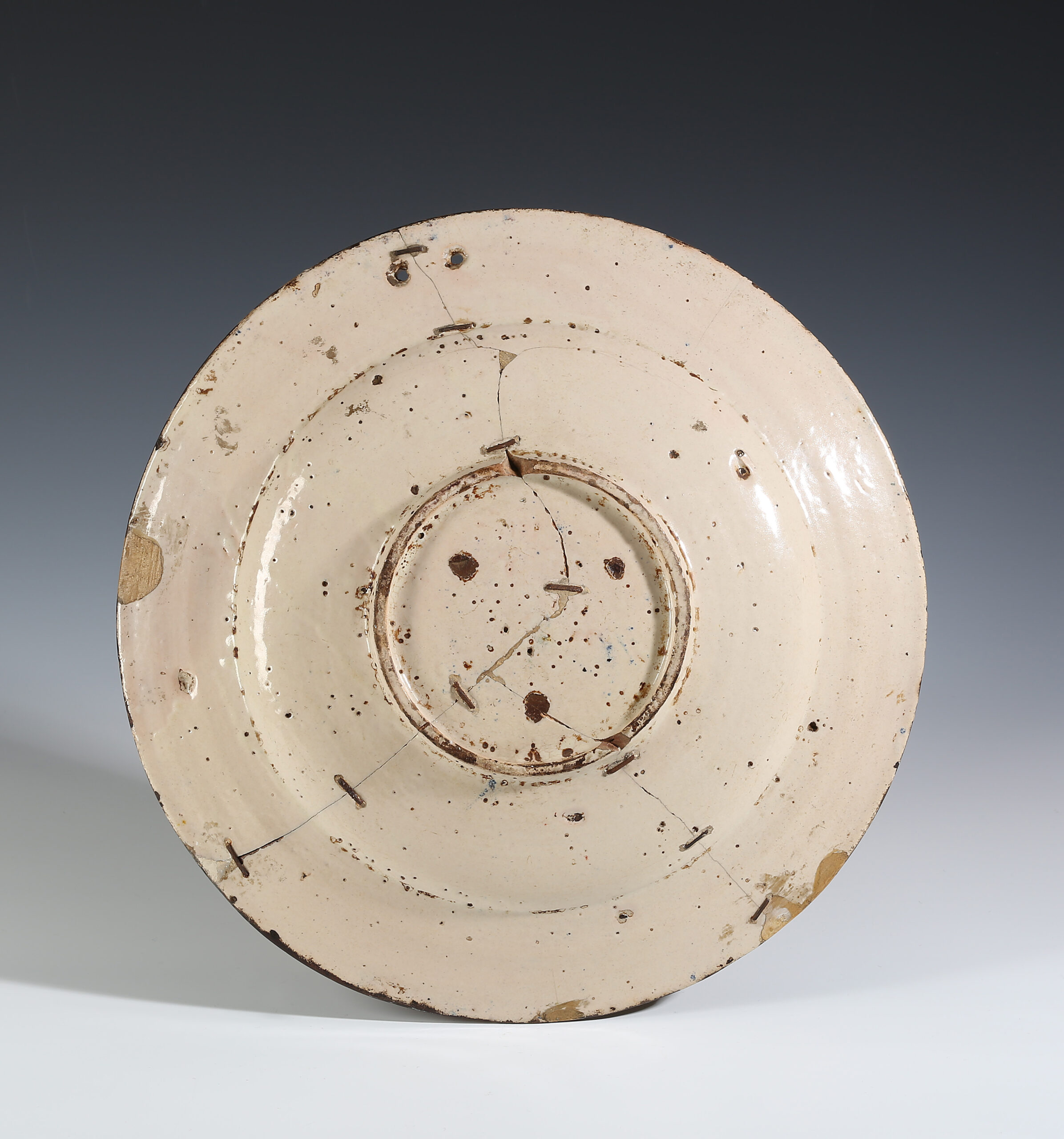
Boldly painted in blue, ochre and manganese with a large escutcheon below a helm set against densely scrolling foliage.
Although very much in the manner of Talavera serie tricolor wares, this dish is rather more densely decorated and in fact comes from Muel in Aragon (I am grateful to Maria Antonio Casanovas for this attribution).
Anthony Ray notes that the expulsion of the Moors in 1610 affected the potteries of Muel considerably, since its population was largely Moorish in the 16th century and there was an urgent need to revive the industry. Potters from Catalonia and Castile were attracted by the favourable terms granted by the overlord, the Marqués de Camarasa. The potteries recovered quite quickly and were soon in a position to supply the local capital, Zaragoza. (Ray 2000 p. 207).
The arms are likely to be fanciful as they do not respect the correct heraldic rule (I am again grateful to Maria Antonio Casanovas for this).
Condition:
Broken in three sections secured with old iron rivets. Some large old chips, mostly visible on the reverse.
References:
Alexius and Christian Feit, Spanische Fayencen: XV. Bis XIX. Jahrhundert, (Hirmer Verlag GmbH, 2012)
Anthony Ray, Spanish Pottery 1248-1898: With a Catalogue of the Collection in the Victoria and Albert Museum, (2000) p. 207
Price: £7,000




